
The Arctic convoys of World War II were oceangoing convoys which sailed from the United Kingdom, Iceland, and North America to northern ports in the Soviet Union – primarily Arkhangelsk (Archangel) and Murmansk in Russia. There were 78 convoys between August 1941 and May 1945, sailing via several seas of the Atlantic and Arctic oceans, with periods with no sailings during several months in 1942, and in the summers of 1943 and 1944.
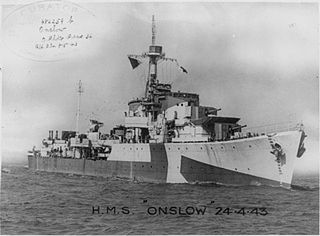
HMS Onslow was an O-class destroyer of the Royal Navy. The O-class were intermediate destroyers, designed before the outbreak of the Second World War to meet likely demands for large number of destroyers. They had a main gun armament of four 4.7 in guns, and had a design speed of 36 kn. Onslow was ordered on 2 October 1939 and was built by John Brown & Company at their Clydebank, Glasgow shipyard, launching on 31 March 1941 and completing on 8 October 1941.
Convoy PQ 1 was the second of the Arctic Convoys of World War II by which the Western Allies supplied material aid to the Soviet Union in its fight with Nazi Germany. The convoy sailed from Hvalfiord in Iceland on 29 September 1941 and arrived at Archangelsk on 11 October 1941.
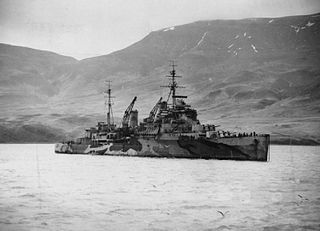
PQ 13 was a British Arctic convoy that delivered war supplies from the Western Allies to the USSR during World War II. The convoy was subject to attack by German air, U-boat and surface forces and suffered the loss of five ships, plus one escort vessel. Fifteen ships arrived safely.
Convoy PQ 7 was the eighth of the Arctic convoys of the Second World War by which the Western Allies supplied material aid to the Soviet Union in its fight with Nazi Germany. The convoy was in two parts: PQ 7a sailed from Hvalfjörður, Iceland on 26 December 1941 and arrived at Murmansk on 12 January 1942. PQ 7b sailed from Hvalfjord, Iceland on 31 December 1941 and arrived in Murmansk on 11 January 1942.
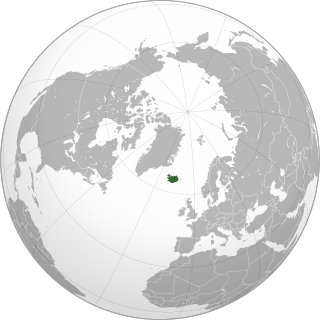
Operation FB took place as part of the Arctic Convoys of the Second World War. The operation consisted of independent sailings by unescorted merchant ships between Iceland and Murmansk. In late 1942, the Allies had taken the offensive against Germany but the dispatch of supplies to the USSR by convoy via the Arctic route was suspended, due to the demands of the Mediterranean campaign. Convoy PQ 19 was cancelled because the Home Fleet diverted ships to the Mediterranean for Operation Torch which would have had to be postponed for three weeks had ships been provided for PQ 19.
Convoy PQ 18 was the last of the PQ/QP series of arctic convoys during World War II, bound from US and British ports via Reykjavík in Iceland to the Barents Sea and White Sea ports of the Soviet Union, particularly Murmansk and Archangel. The convoy sailed on 2 September 1942 and arrived three weeks later on 21 September 1942. It was opposed by German sea and air forces based in occupied Norway.

Convoy PQ 15 was an Arctic convoy sent from Iceland by the Western Allies to aid the Soviet Union during the Second World War. The convoy sailed in late April 1942, reaching the Soviet northern ports after air attacks that sank three ships out of twenty-five.
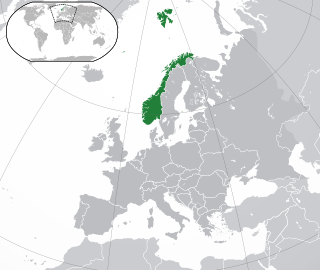
Convoy PQ 14 was an Arctic convoy sent from Britain by the Western Allies to aid the Soviet Union during the Second World War. Convoys from Britain had been despatched since August 1941 and advantage had been taken of the perpetual darkness of the Arctic winter. German operations against the convoys had been muted due to the need to support Operation Barbarossa, confidence in imminent victory and the small size of the convoys. In late 1941 and early 1942 the Luftwaffe and Kriegsmarine had reinforced Norway with aircraft and ships.
Convoy PQ 12 was an Arctic convoy sent from Great Britain by the Western Allies to aid the Soviet Union during World War II. It sailed in March 1942, reaching Murmansk despite a sortie against it by the German battleship Tirpitz. All ships arrived safely.
Convoy PQ 11 was an Arctic convoy sent from Great Britain by the Western Allies to aid the Soviet Union during World War II. It sailed in February 1942 and arrived in Murmansk without loss.

Convoy PQ 8 was an Arctic convoy of the Western Allies to aid the Soviet Union during the Second World War. The convoy left Iceland on 8 January 1942. On 12 January the convoy had to turn south to avoid ice; the weather was calm, visibility was exceptional, with a short period of twilight around noon. and arrived in Murmansk nine days later.
Convoy JW 51A was an Arctic convoy sent from Great Britain by the Western Allies to aid the Soviet Union during World War II. It sailed in December 1942, reaching the Soviet northern ports at the end of the month.
Convoy JW 51B was an Arctic convoy sent from United Kingdom by the Western Allies to aid the Soviet Union during World War II. It sailed in late December 1942, reaching the Soviet northern ports in early January 1943.

Arctic naval operations of World War II were the World War II naval operations that took place in the Arctic Ocean, and can be considered part of the Battle of the Atlantic and/or of the European Theatre of World War II.
Convoy QP 10 was an Arctic convoy of World War II, consisting of empty merchant ships returning from the Soviet Union after delivering their cargo there. The convoy consisted of 16 merchant ships and an escort of nine warships. The convoy departed Murmansk on 10 April 1942 and arrived in Reykjavik on 21 April. The convoy was attacked by German U-boats and aircraft, resulting in the loss of four merchant ships. Another ship, Stone Street, was damaged by air attack and forced to turn back to the Kola Inlet. The convoy's escorts shot down six German planes and damaged another during the course of the voyage. Later, six merchant ships from Convoy PQ 14 joined QP 10.

Convoy QP 14 was an Arctic convoy of the QP series which ran during the Second World War. The convoy was a return journey of Allied ships from the port of Archangelsk in the Soviet Union to Loch Ewe in the west of Scotland. The British planned to send Convoy PQ 18 from Iceland to Murmansk and when the convoys crossed transfer much of the escort force from the outbound convoy to Convoy QP 14 and escort back it through the most dangerous waters off Norway.
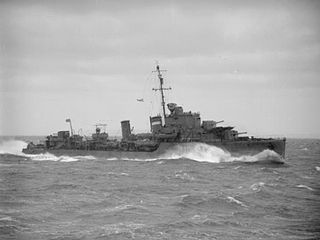
Convoy QP 13 was an Arctic convoy of the PQ/QP series which ran during the Second World War. It was the thirteenth of the numbered series of convoys of merchant ships westbound from the Arctic ports of Arkhangelsk and Murmansk to the United Kingdom, Iceland, and North America.
Convoy QP 1 was an Arctic convoy of the PQ/QP series which ran during the Second World War. It was one of a series of convoys run to return Allied ships from Soviet northern ports to home ports in Britain. It sailed in late September 1941, reaching Allied ports in mid-October. All ships arrived safely.

HMS Dianella was a Flower-class corvette of the Royal Navy. She served during the Second World War.








